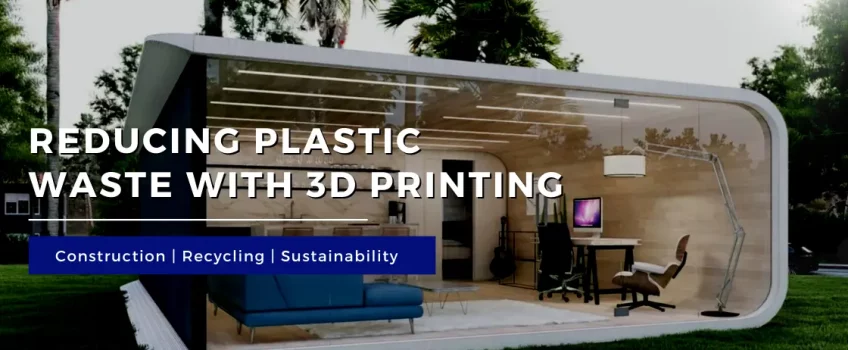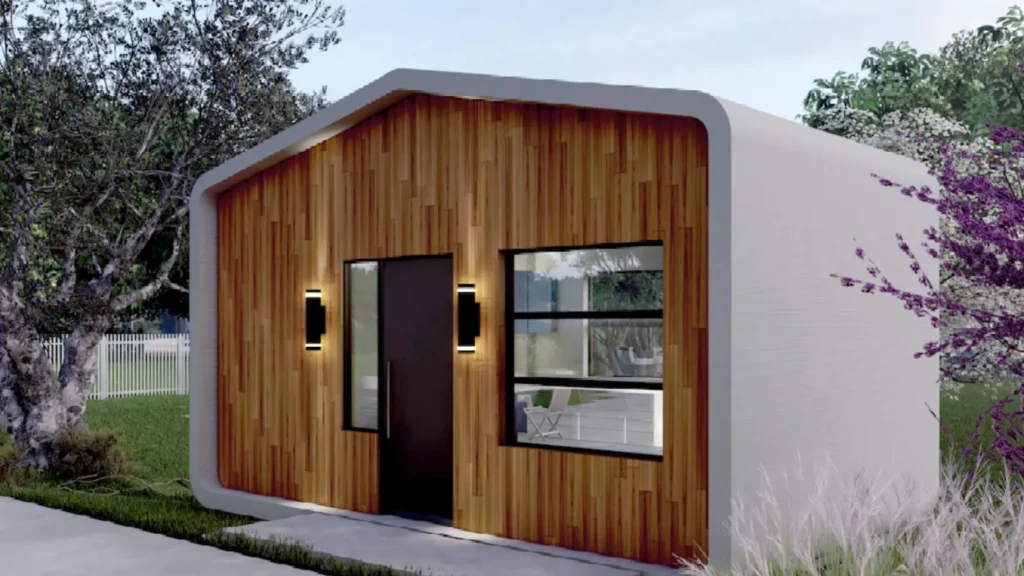
With sustainability in construction a big talking point in recent years, not to mention plastic waste, a startup in Los Angeles is building 3D printed homes using recyclable plastics. While it may not solve all of the world’s problems, it’s a big step in the right direction. What’s more, their method is faster, cheaper and more sustainable.
Tackling Sustainability With 3D Printed Homes
The Los Angeles-based architectural startup, Azure, is among many companies carrying out projects involving recyclable materials for sustainability purposes. They are using recycled plastic to build 3D printed homes and have started selling many prefab models in different forms, including a garden studio (“backyard studio) and a two-bedroom accessory dwelling unit (ADU). This is the legal and regulatory term for a secondary house or flat that is on the same land as the primary home.
Additive manufacturing has become a big asset for various sectors, including construction and manufacturing. Thanks to the continued advancements in technology, 3D printed homes can be created in no time at all. At the same time, the manufacturing sector has already seen the tremendous benefits it has to offer.
3D Printed “Backyard Studio”
In addition to the 3D printed homes, Azure also unveiled the world’s first 3D printed “backyard studio” using recycled plastics. These studios and ADUs can now be preordered as Azure is ramping up production in Culver City, Los Angeles.
In April this year, Ross Maguire, the CEO of Azure said: “The construction sector is the largest global consumer of raw materials, responsible for approximately 11% of the world’s total carbon emissions. Our responsibility to our customers and future generations is to use the most sustainable practices imaginable.”
Building 3D Printed Homes Faster, Cheaper And More Sustainably
A few years ago, ICON, a Texas start-up started mass producing 3D printed homes to provide sustainable and quality homes accessible to everyone. They used a portable Vulcan 3D printer that produces a custom blend of concrete that hardens as it prints, like many other similar projects.
However, the printing materials Azure are using consist of the waterproof plastic polymer often found in plastic bottles and food packaging. And as we all know by know, plastic waste is a major concern with an estimated 8.3 billion tons of plastic across the globe as of 2021.
If Azure’s 3D printed homes are made from recyclable materials, any amount of plastic waste removed from circulation would go a long way in promoting sustainability. With the technology at its disposal, Azure can build 3D printed homes 70% faster and 30% cheaper compared to traditional construction methods.
Azure Introduces A New Age Of Home Building
The benefits of 3D printing extend to several sectors, including manufacturing, medical, fashion, prototyping, production and construction. With the available additive manufacturing technology, bigger projects are possible and Azure is certainly on the right track toward building a sustainable future.
Here is what Ross Maguire had to say about their 3D printed homes: “We have created production efficiencies not only by capitalising on the advances in 3D printing but by creating a design and process that is completed in only 20 hours.”

Compared to conventional construction, Azure can produce the following at a fraction of the cost and time:
- entire structural skeleton
- exterior sheathing
- water control barrier
- exterior finish
- passageways for utilities
- grounding for interior finishes
When describing the company’s primary goal, Maguire added that “by revolutionising a new age of the home building with our sustainable, automated, and exact production processes, we see a very, very exciting future ahead.”
Who Is Azure?
Ross Maguire and Gene Eidelman founded Azure by combining their vast experience in building and developing properties across three continents. With their business model and 3D printed homes, this start-up is changing the construction sector for the better.
Ross and Gene wanted to find a more efficient way to build homes and set out to construct 3D printed homes. Their goal was to prefabricate “backyard studios”, offices and homes faster, more economically and with minimal impact on the environment. By taking advantage of the fast-growing 3D printing technology and recycled plastic, they could revolutionise the construction sector.
Whilst Ross and Gene are leading from the front, they have a team behind them with different expertise. This includes the field of 3D printing, prefabricated construction, logistics, marketing, and finance.
3D Printed Homes And Other Projects
With construction in mind, additive manufacturing is paving the way for more and bigger projects. We’ve seen some fascinating projects over the years and while they don’t all use recyclable materials, many have helped in part to get us where we are today. Here are a few projects or applications PRV Engineering covered:
- 3D printing military barracks (built in less than 2 days)
- 3D printing in space
- Additive manufacturing in bridge construction
- Sustainable 3D printed shelters for the Mars colony
PRV Engineering provides premium additive manufacturing services to a wide range of customers across different sectors. From one-off design work to ongoing part manufacture; if you need engineering solutions, contact PRV Engineering.
If you like reading this article on 3D printed homes, follow our blog as we report on the latest in engineering, manufacturing and technology. You can also join the conversation on social media using the hashtag #PRVtech.


 Mail:
Mail: 




[…] more articles on 3D printed homes, engineering marvels, manufacturing and construction technology, follow our blog and join the […]